Affiliate links on Android Authority may earn us a commission. Learn more.
Redmi 7A hands-on: Will it continue Xiaomi's dominant run in India?
Published onJuly 8, 2019
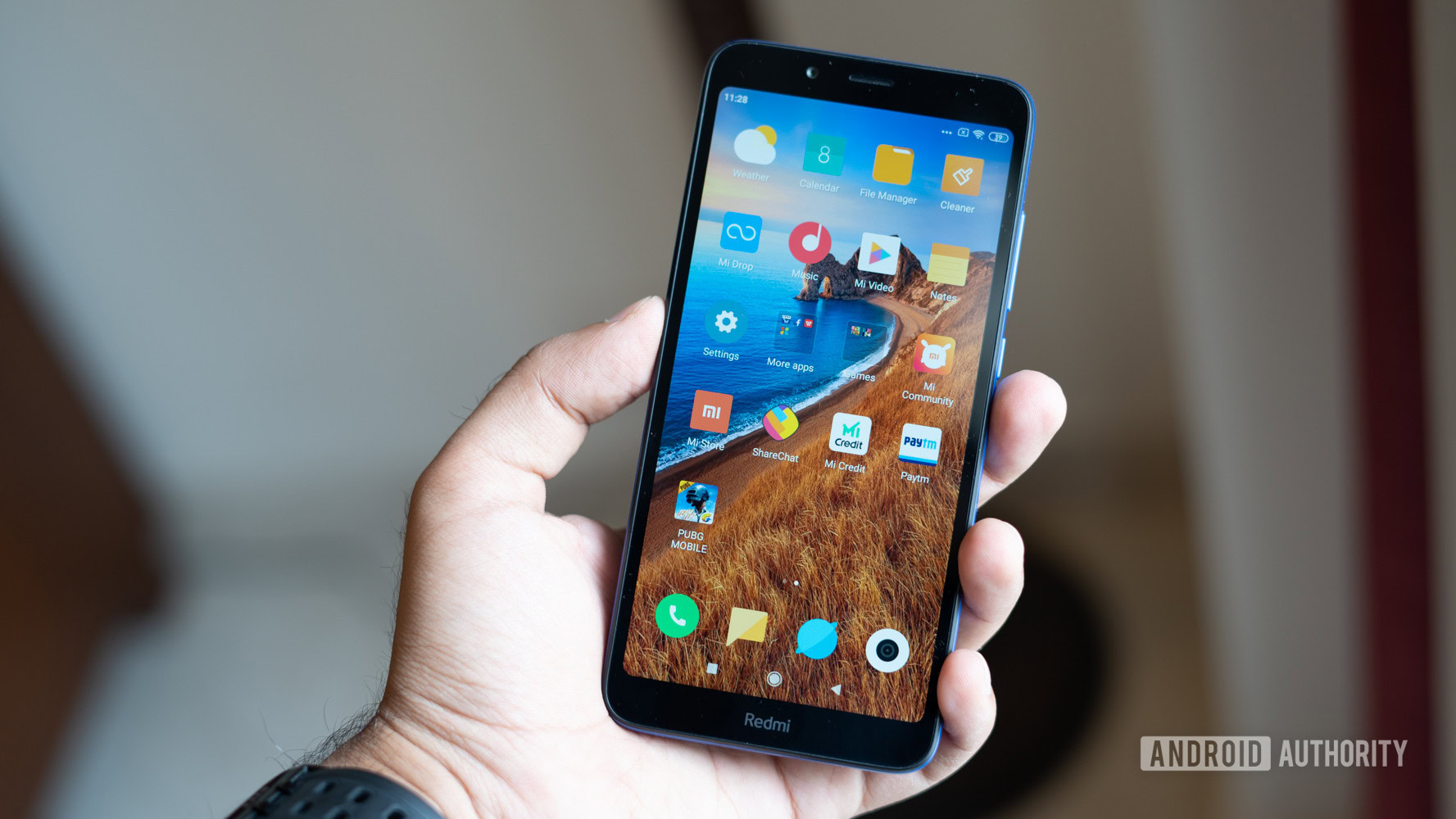
A cursory glance at Xiaomi’s product portfolio indicates that the company aims to have a Redmi at every possible price point. One such price point is the absolute entry-level segment where Xiaomi, predictably, dominates. The Redmi 7A is the latest iteration in the long line of the immensely popular Redmi A series.
With a 48 percent market share in the $75-$100 market share in India, according to IDC India’s April 2019 report, it would be fair to say that Xiaomi has done a great job at this price point. The Redmi 7A, however, is aimed at kicking this up a notch and taking on the oncoming competition from the likes of Realme.
The 2GB+16GB model is initially set to retail for 5799 rupees (~$85) and the 2GB+32GB price will cost 5999 rupees (~$88) via Mi.com, Flipkart, and several other partners. Can the phone hold its own though? Let’s find out.
An updated design
The Redmi 7A is amongst the last holdouts from Xiaomi’s updated design language. While cost constraints mean that the phone doesn’t get the glass and metal build of the higher end phones, the phone does get a refreshed polycarbonate outlook.
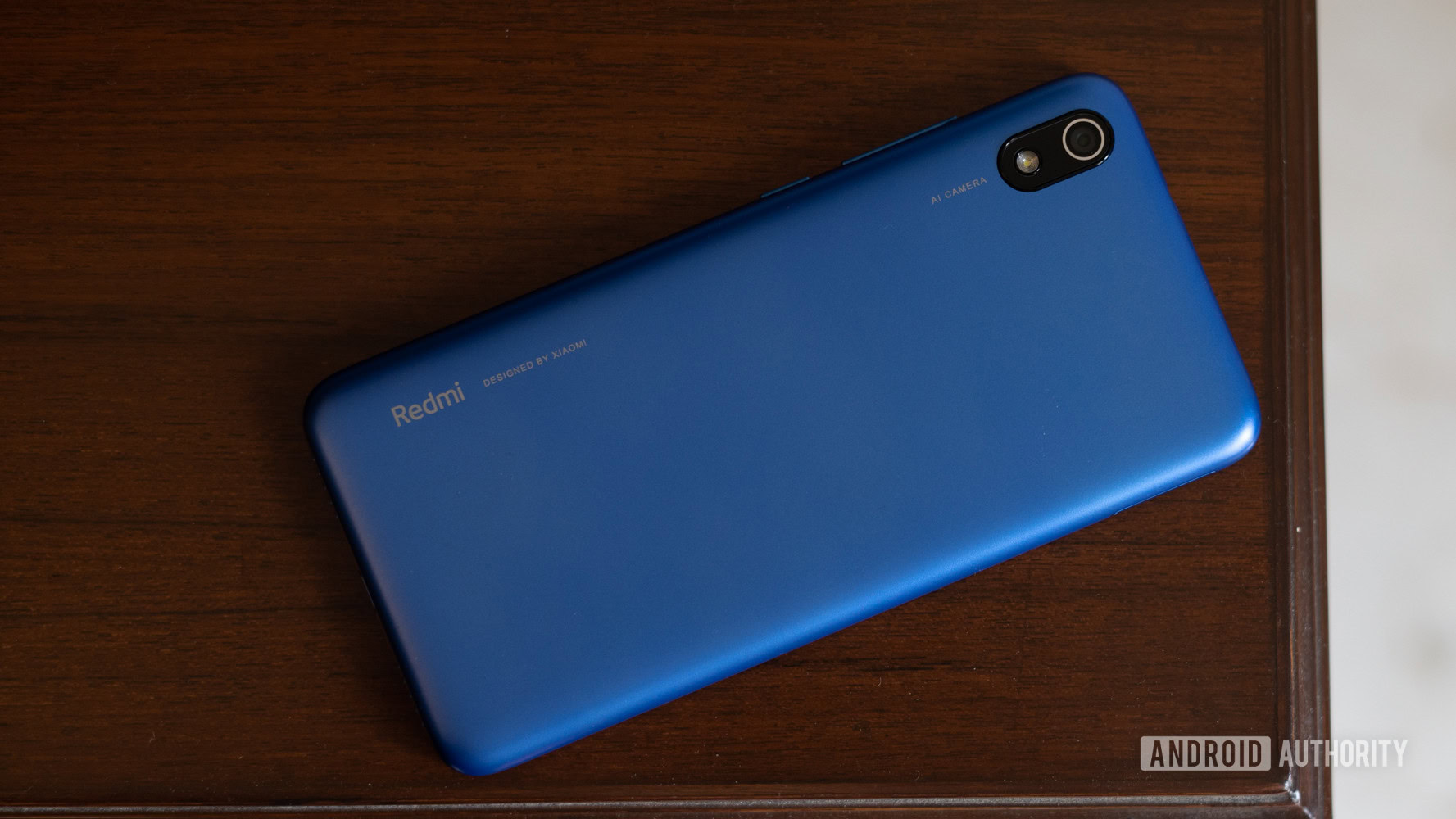
The majority of the changes are at the rear where the phone sports a matte plastic back, similar to what we saw on the Redmi Go. I don’t really mind the use of high-quality plastics since the material is inherently more resistant to drops, but the material used here attracts an awful lot of scuffs and oil stains. Our standard advice of using a case definitely applies here as well.
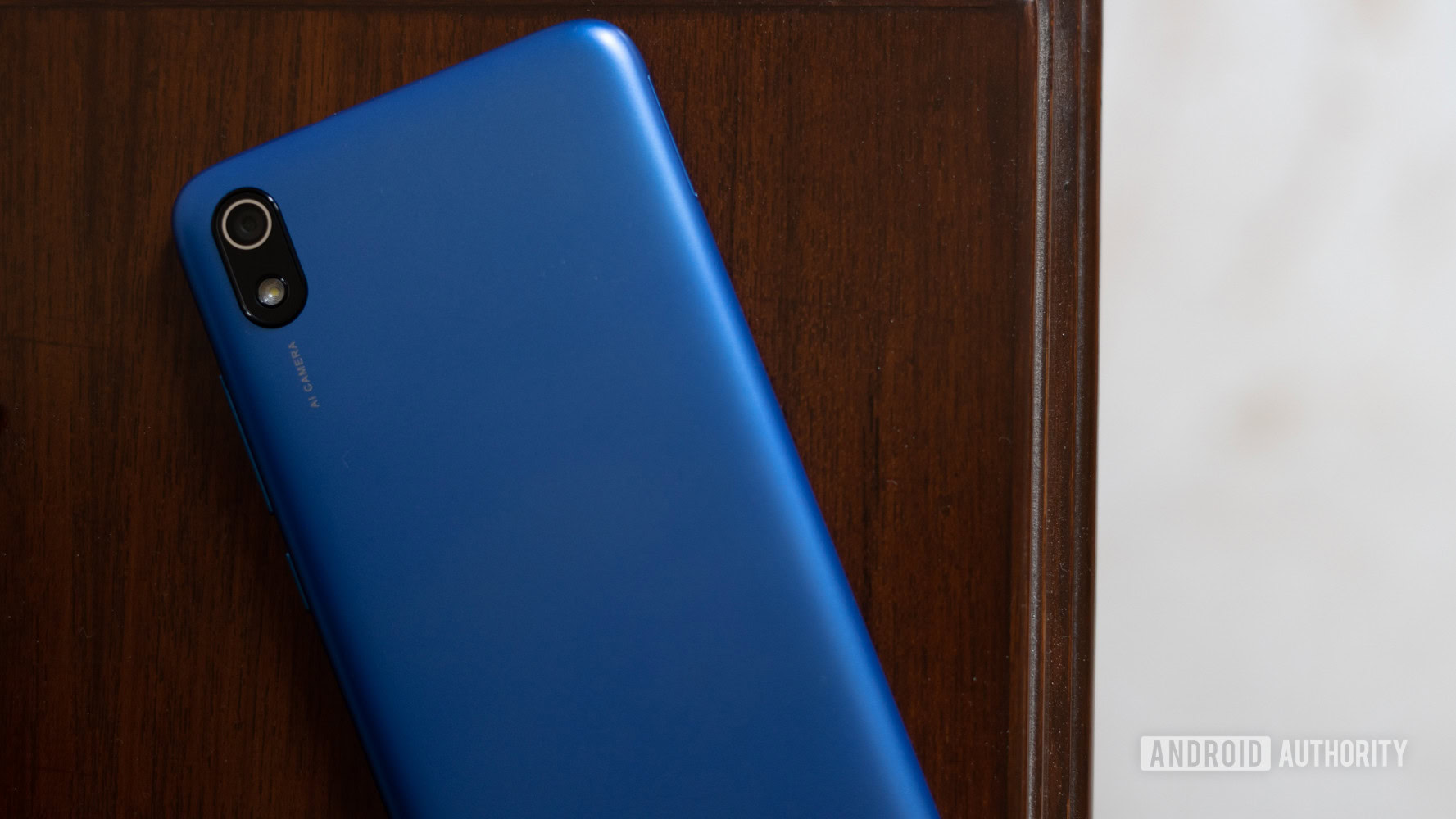
The camera orientation on the Redmi 7A has changed compared to the horizontal orientation on the 6A. Also gone are the plastic end-caps in lieu of a single plastic shell that flows smoothly from the top to bottom, with subtle Redmi branding silk-screened near the bottom.
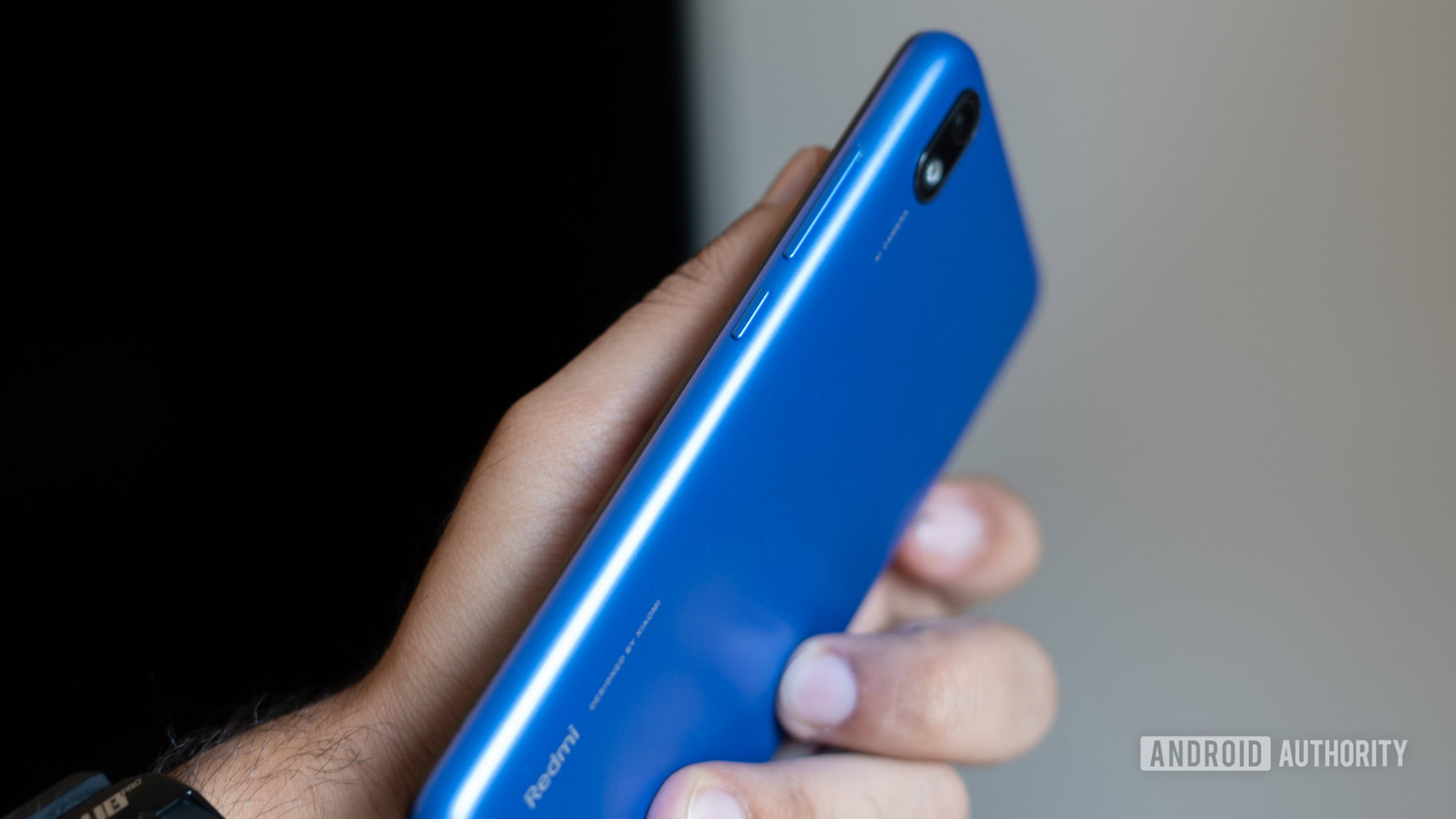
The volume rocker and the power button are both placed to the right of the phone and do not exhibit any signs of wobble or shake. The Redmi 7A appears to have been built to fairly exacting standards. I might be nitpicking here, but I wish that the volume rocker had just a bit more travel to it as it feels a bit too shallow. The left side has dedicated dual-SIM slots as well as a slot for microSD expansion.
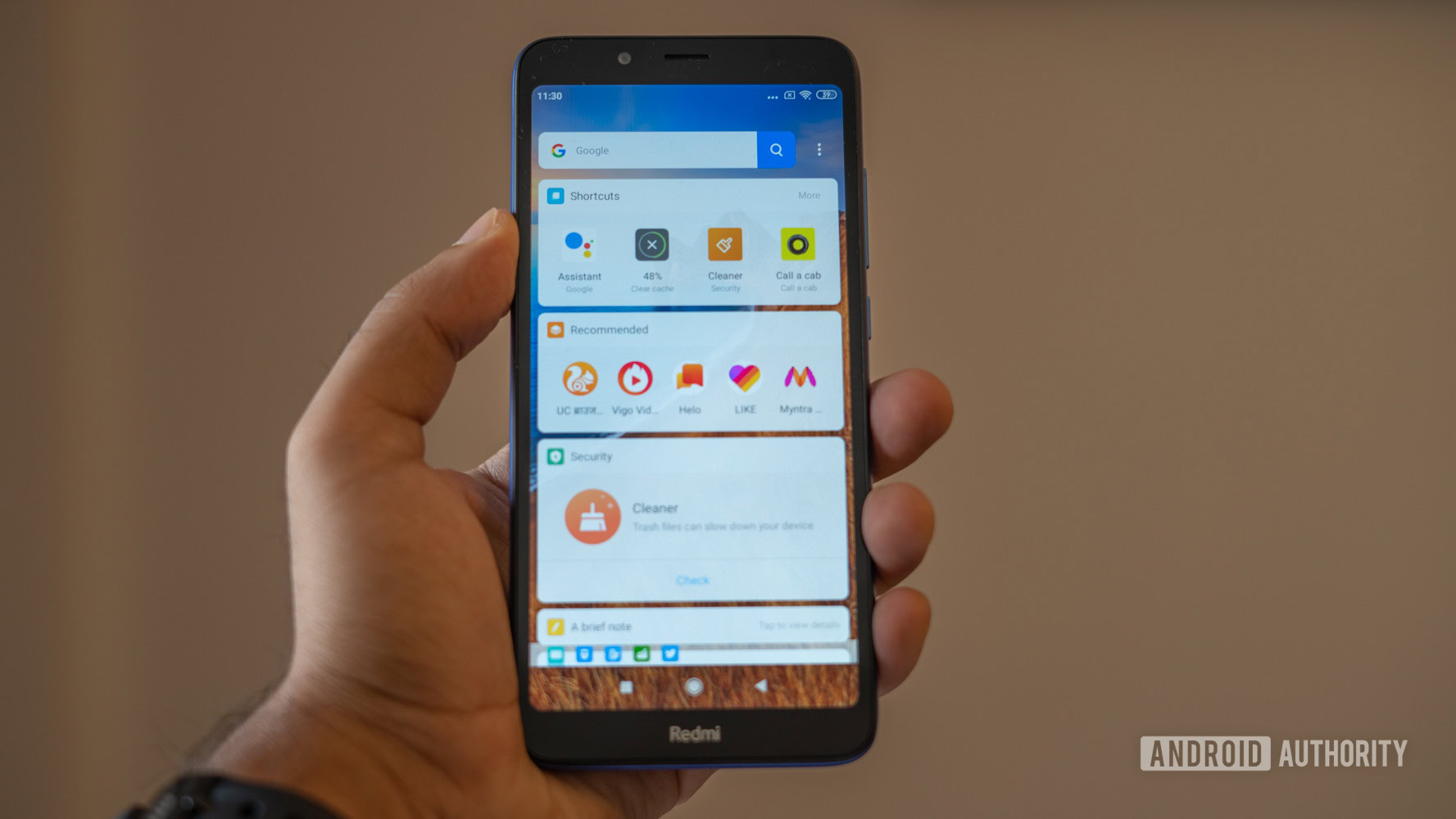
Moving on to the display, the 5.45-inch panel is fairly utilitarian. No, you don’t get a notch, cutout or any of the new-fangled bezel-saving tactics. What you do get is an 18:9 aspect ratio which makes the phone easier to hold and a reasonably sharp 720 x 1,440 resolution. Colors are fairly vibrant and sunlight visibility is good, but not excellent. With the target audience being college students or people who might be out and about, higher peak brightness levels would have been much appreciated.
Given the price point, it comes as no surprise that the phone is equipped with a micro-USB port along the bottom edge. You’ll also find a downward-firing speaker here that goes surprisingly loud. It isn’t the clearest nor does it have any semblance of bass but if you want to blast the FM radio out loud or just take a phone call, it will handily do the job.
Powerful hardware… for the price
A phone like the Redmi 7A isn’t really meant for power users. Think first-time smartphone buyers or perhaps someone looking for a secondary device. Keeping that in mind, the Redmi 7A comes across as a pretty solid option.
Performance, in its category of devices, is rather good and the limited RAM aside, you should be able to run all your favourite apps just fine. Multitasking is certainly not the forte here as I noticed the phone reloading web pages and apps with a minimal load. But, that’s what you get with just 2GB of RAM on board the device. While Xiaomi does offer two variants swinging between 16 and 32GB of storage, it would’ve been nice to add just a bit more RAM on the pricier version. Perhaps, it would push pricing closer to the Redmi 7? We can only speculate.
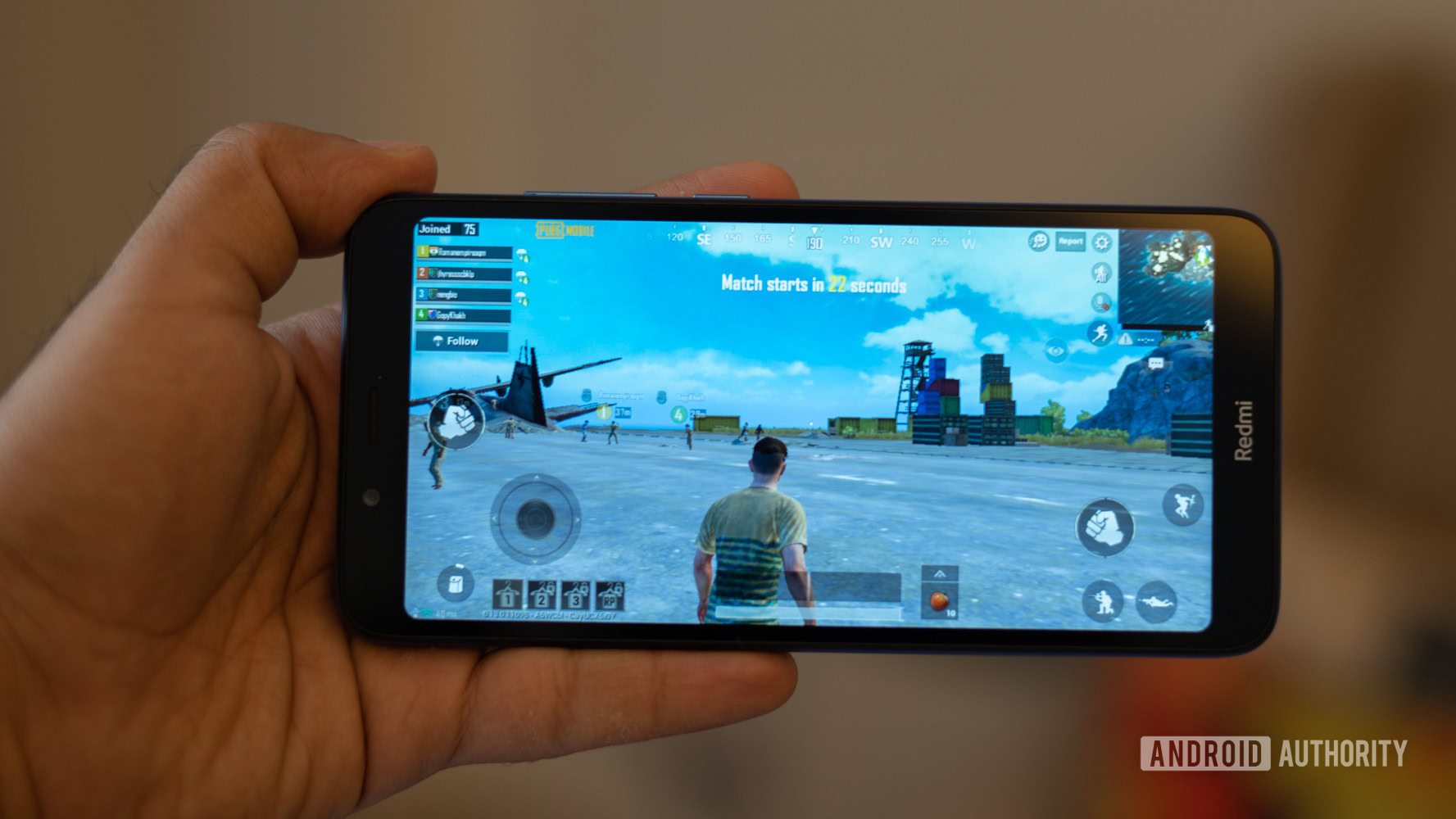
The phone runs on a Snapdragon 439 processor, which is a power-efficient 12nm chipset. While this is still an entry-level chipset, the clock speed now goes up to a maximum of 2GHz on the Cortex-A53 cores. Performance here is closer to the Snapdragon 625 than the Snapdragon 450. The GPU, on the other hand, continues to be the anaemic Adreno 505 so don’t expect any miracles as far as games are concerned. To its credit, the Redmi 7A did manage to run PUBG at a reasonable clip. Of course, there were frame drops aplenty and you certainly won’t get HD graphics here.
Arguably the biggest improvement on the Redmi 7A has to be the massive battery. Stepping up to a 4,000mAh battery and a more frugal processor architecture means that the phone can last days on end. I’ve had a very limited amount of time with the phone yet, but going by my experience so far, two-day battery would be very realistic.
Camera
Color me surprised but the 12MP camera on the Redmi 7A is rather good for the price. In fact, if our early impressions are anything to go by, this might just be the best camera at this price point.
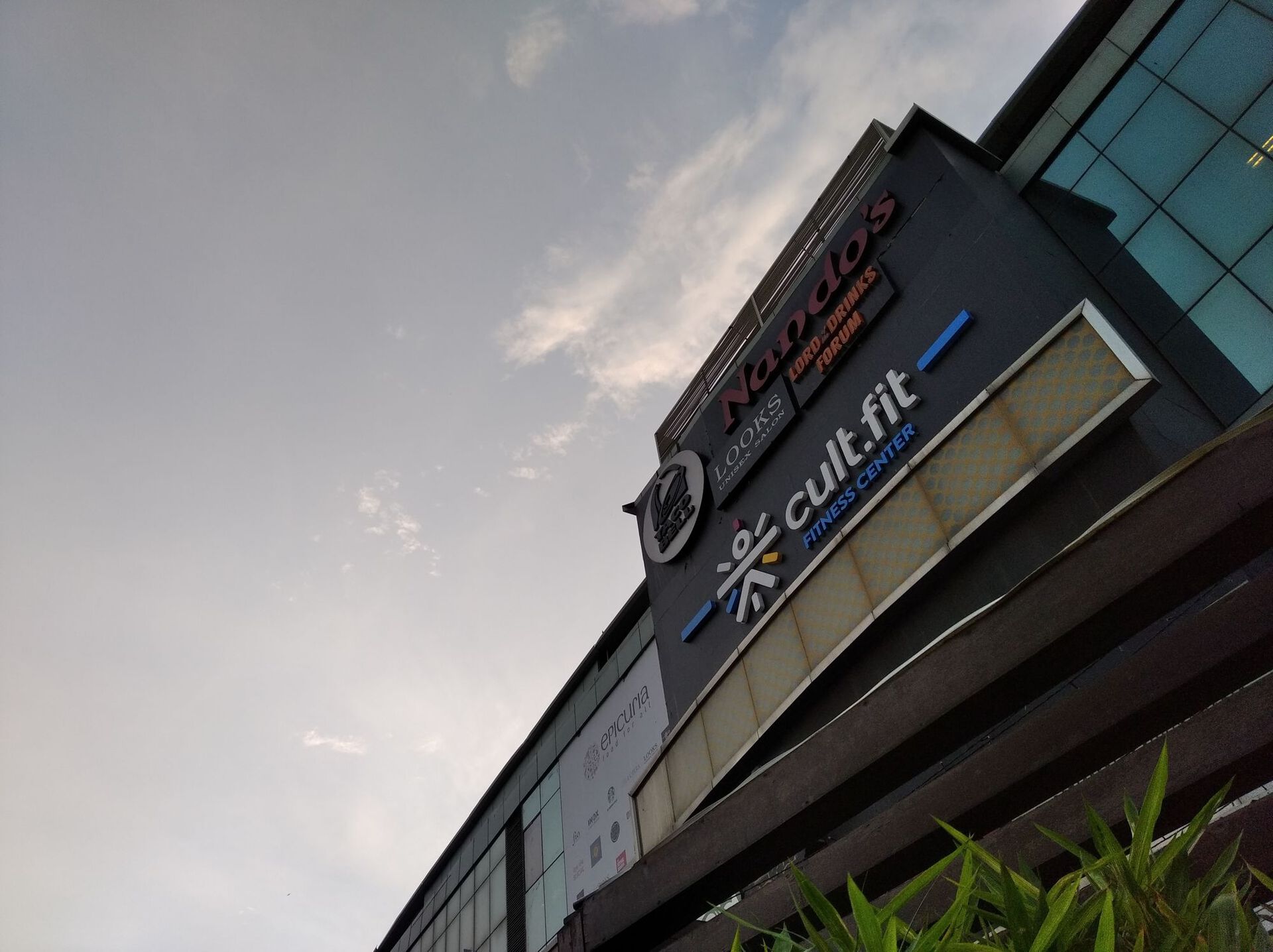
Despite an overcast day, the HDR processing was quite natural and was able to bring out details from the darkened front of the building.
Colors do have a slight saturation boost and you shouldn’t pixel-peep for details, as those are certainly lacking. Low-light images too leave a lot to be desired. Still, this is more camera than we’ve come to expect at this price point.
Redmi 7A specifications
| Redmi 7A (India) | |
|---|---|
Display | 5.45-inch IPS LCD 720 x 1,440 resolution 18:9 aspect ratio |
SoC | Qualcomm Snapdragon 439 (12 nm) Octa-core CPU (4x 1.95GHz + 4x 1.45GHz) |
GPU | Adreno 505 |
RAM | 2GB |
Storage | 16GB/32GB Expandable with microSD card (up to 256GB) |
Cameras | 5MP front camera with face unlock Rear camera: 12MP sensor (Sony IMX486, 1.25μm pixel size f/2.2 aperture) LED flash |
Battery | 4,000mAh non-removable 10W charging (5W charger included) |
Software | Android 9.0 Pie with MIUI 10 |
Dimensions and weight | 146.30 x 70.41 x 9.55mm 165 grams |
The Redmi 7A comes at a time when Xiaomi’s competitors are wising up. It isn’t the only company selling quality hardware at an affordable price. With that in mind, Xiaomi will have to focus on broader aspects of the phone like the software experience that is increasingly becoming irksome to users.
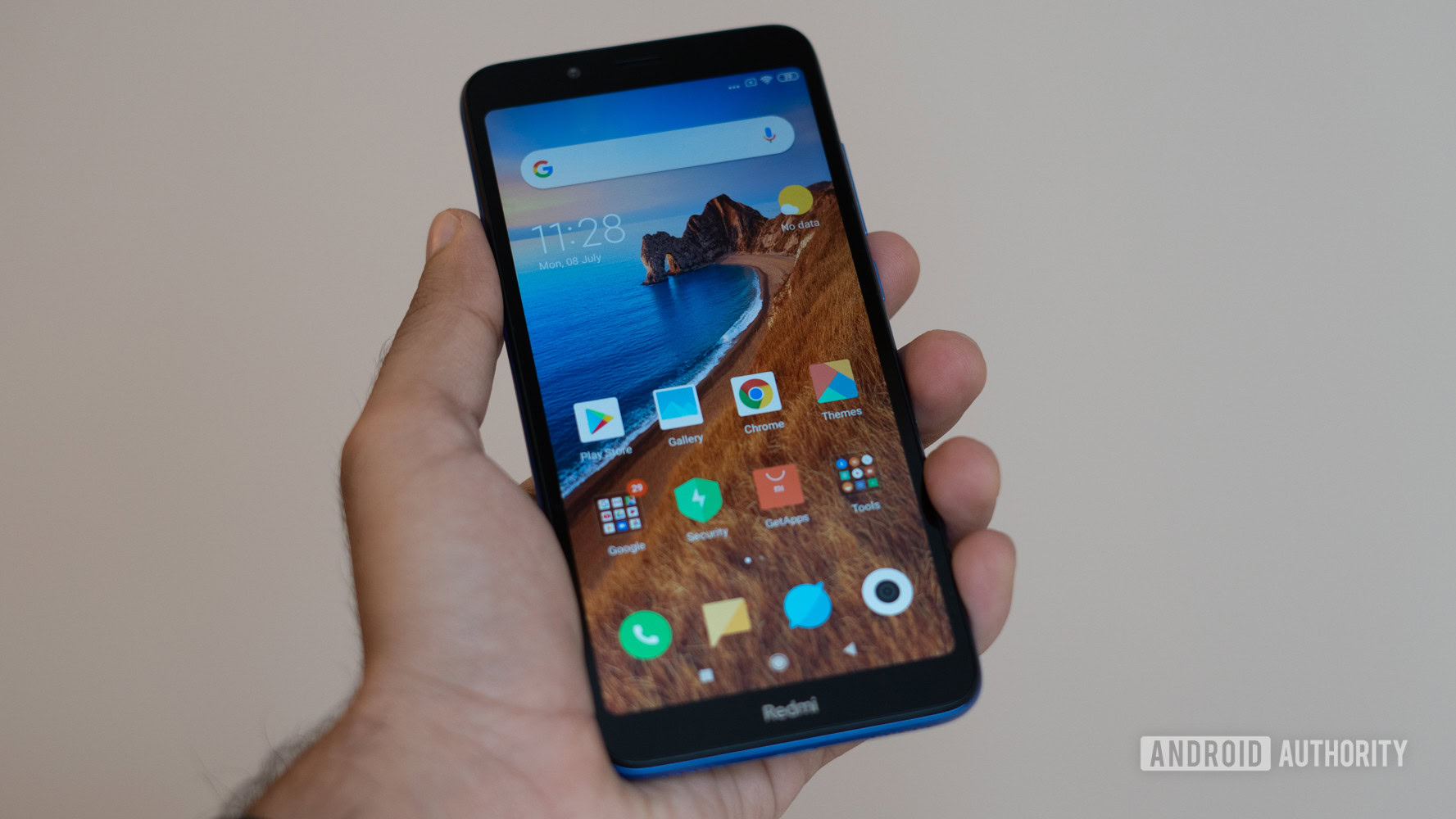
Still, it is hard to deny the value here. If you are looking for an entry-level smartphone, the Redmi 7A is certainly a top contender.
NEXT: Xiaomi Redmi 7A announced in India with surprise new camera